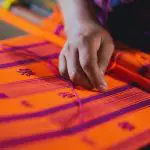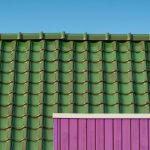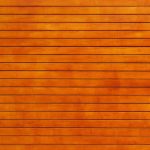So, you've just finished your latest fabric project and applied Mod Podge as a sealant. Now, you're wondering how to properly cure it for the best results. Look no further.
In this guide, you'll discover five fabric-friendly methods to cure Mod Podge like a pro. From heat setting and ironing to air drying and tumble drying, you'll learn the most effective techniques to ensure your project's longevity.
Whether you're a seasoned crafter or just starting out, mastering these curing methods will elevate your fabric projects to the next level. Let's dive in and explore these tried-and-true approaches for curing Mod Podge on fabric.
Key Takeaways
- Heat setting methods can help cure Mod Podge on fabric, with the appropriate heat setting and gentle pressing with an iron.
- Air drying is another effective method, where the fabric is laid flat in a well-ventilated area to dry completely.
- Tumble drying with low heat and dryer balls can also be used, but caution should be taken to prevent overheating and brittleness of the Mod Podge.
- Adding a fabric medium to the Mod Podge can enhance its durability and flexibility on fabric, and experimenting with different ratios and alternatives can be beneficial.
Heat Setting Method
To heat set Mod Podge on fabric, you'll need to use an iron and follow these simple steps. This method is crucial for ensuring that your Mod Podge application on fabric is durable and long-lasting.
First, allow your Mod Podge to air dry for 24 hours to ensure that it has completely cured. Then, place a pressing cloth over the fabric to protect it from direct contact with the iron. Set your iron to the appropriate heat setting based on the type of fabric you're using.
Gently press the iron onto the fabric for 4-5 minutes, making sure to cover the entire area where the Mod Podge was applied. Avoid using a back-and-forth motion as this may cause the Mod Podge to shift.
Once the heat setting process is complete, allow the fabric to cool completely before handling it. This heat setting method not only ensures that the Mod Podge adheres firmly to the fabric but also helps in fabric care by maintaining its quality.
Ironing Technique
When ironing Mod Podge on fabric, precision is essential to ensure a secure bond and long-lasting results. To master the ironing technique for curing Mod Podge on fabric, consider the following tips and suggestions:
- Use a Dry Iron: Set your iron to the cotton setting, ensuring that it's dry and free of water. Moisture can interfere with the Mod Podge curing process and affect the fabric's texture.
- Apply Even Pressure: When ironing the fabric, apply even pressure to the Mod Podge area. This helps to ensure that the Mod Podge adheres uniformly to the fabric, preventing any potential wrinkles or bubbles.
- Use a Pressing Cloth: To protect both the Mod Podge and the fabric, place a pressing cloth over the Mod Podge area before ironing. This extra layer helps to distribute the heat evenly and prevents direct contact between the iron and the Mod Podge.
Air Drying Process
Mastering the ironing technique, you can also achieve effective results by allowing the Mod Podge on fabric to air dry thoroughly. Patience is key during the air drying process. After applying Mod Podge to your fabric and letting it set for a few minutes, it's crucial to allow it to air dry completely. Here's a simple table to guide you through the air drying process and ensure proper care for your fabric:
| Air Drying Process | Description |
|---|---|
| Choose a Flat Surface | Lay your fabric on a clean, flat surface to air dry. Avoid hanging the fabric as it may cause the Mod Podge to drip and create uneven patches. |
| Gentle Air Circulation | Place the fabric in a well-ventilated area with gentle air circulation. This will help speed up the drying process without disturbing the Mod Podge application. |
| Check for Complete Dryness | After a few hours, check for complete dryness. The fabric should feel firm and the Mod Podge should be transparent with no visible white streaks. |
Tumble Drying Approach
For the best results, use a low heat setting when tumble drying fabric treated with Mod Podge to ensure the adhesive sets properly without damaging the material. Tumble drying provides a convenient and efficient way to cure Mod Podge while maintaining fabric compatibility.
Follow these tips for a successful tumble drying approach:
- Low Heat: Always opt for a low heat setting to prevent overheating the fabric and causing damage to the Mod Podge adhesive.
- Use Dryer Balls: Adding dryer balls to the dryer can help distribute heat and prevent fabric from sticking together, ensuring an even drying process without compromising the Mod Podge treatment.
- Monitor Drying Time: Keep a close eye on the drying time to prevent overexposure to heat, as excessive heat can lead to the Mod Podge becoming brittle and the fabric losing its flexibility.
By following these tumble drying tips, you can effectively cure Mod Podge on fabric without compromising its integrity.
Remember to always check the fabric care label for specific drying instructions and consider air drying for delicate or heat-sensitive fabrics.
Using a Fabric Medium
To achieve optimal results when curing Mod Podge on fabric, consider using a fabric medium in conjunction with the adhesive. A fabric medium is a liquid that mixes with acrylic paint or Mod Podge, allowing it to soak into the fabric, making it more flexible and resistant to cracking. When applying fabric medium to Mod Podge projects, it's essential to understand the fabric medium instructions and consider experimenting with different ratios to find the best mix for your specific project. Testing fabric medium on different fabrics can also help determine the ideal ratio for each type of fabric. Below is a table to showcase the process of mixing fabric medium and Mod Podge, and how it can be applied to different fabrics.
| Fabric Medium Ratio | Mod Podge Ratio | Fabric Type | Results |
|---|---|---|---|
| 1 part medium to 2 parts Mod Podge | Cotton | Minimal stiffness, vibrant colors | |
| 1 part medium to 1 part Mod Podge | Silk | Lightweight, soft finish | |
| 2 parts medium to 1 part Mod Podge | Denim | Strong adherence, durable finish |
If you're looking for fabric medium alternatives, glycerin or water can also be used to achieve similar effects. By understanding and experimenting with fabric medium, you can enhance the durability and flexibility of Mod Podge on fabric.
Frequently Asked Questions
Can Mod Podge Be Used on All Types of Fabric, Including Delicate and Stretchy Materials?
Yes, you can use Mod Podge on delicate fabrics, but it may stiffen them slightly. When applying to stretchy materials, it's best to stretch the fabric while drying to prevent cracking. Follow these tips for successful results.
Will the Heat Setting Method Cause Any Discoloration or Damage to the Fabric?
When heat setting Mod Podge, ensure the fabric's durability and preservation. Gentle heat application shouldn't cause discoloration or damage. Proper Mod Podge application and careful heat setting will maintain the fabric's integrity.
Is It Safe to Iron Fabric With Mod Podge on It, and if So, What Temperature Setting Should Be Used?
Yes, it's safe to iron fabric with Mod Podge on it. Use a low-heat setting and a pressing cloth to protect the fabric. This ensures the Mod Podge sets without damaging the fabric. Ironing safety and temperature settings are crucial for achieving optimal results.
How Long Should the Fabric Be Air-Dried After Applying Mod Podge, and Are There Any Special Considerations for Different Types of Fabric?
After applying Mod Podge, air-dry the fabric for at least 24 hours. Consider fabric type – stretchy fabrics may need longer drying. Delicate materials like silk should be handled with care and allowed to dry thoroughly.
Can Mod Podge Fabric Items Be Tumble Dried, and if So, What Temperature and Cycle Should Be Used to Avoid Damaging the Fabric or the Mod Podge?
You can tumble dry Mod Podge fabric items, but use a low heat setting and gentle cycle to avoid fabric and Mod Podge damage. Consider fabric type, and air dry before ironing for best results in fabric care.
- How Does Ring Spun Cotton Affect Garment Fit and Shape Retention? - August 13, 2024
- What Are the Challenges in Producing Ring Spun Cotton? - August 13, 2024
- Is Ring Spun Cotton Suitable for Plus-Size Clothing? - August 13, 2024







